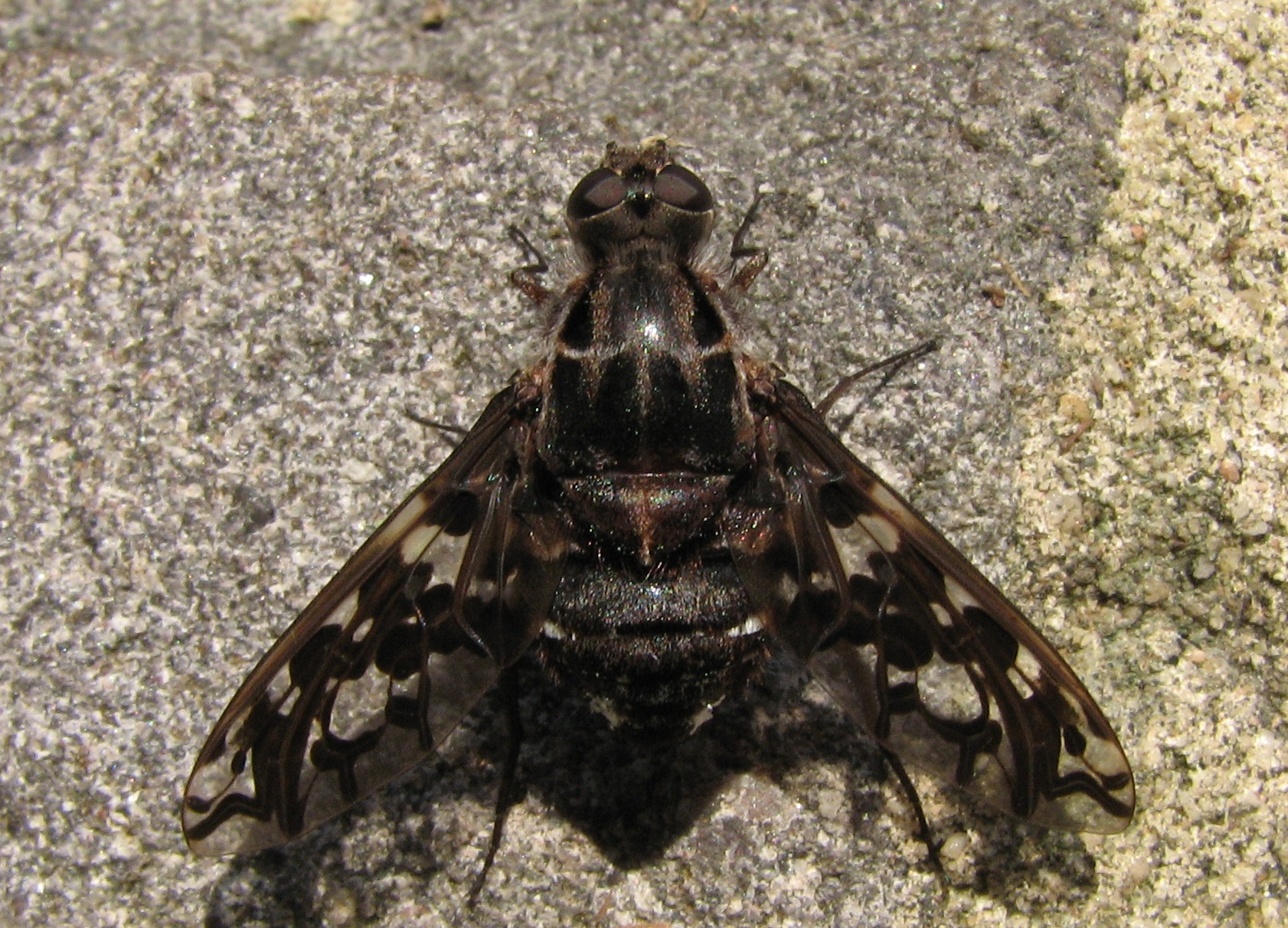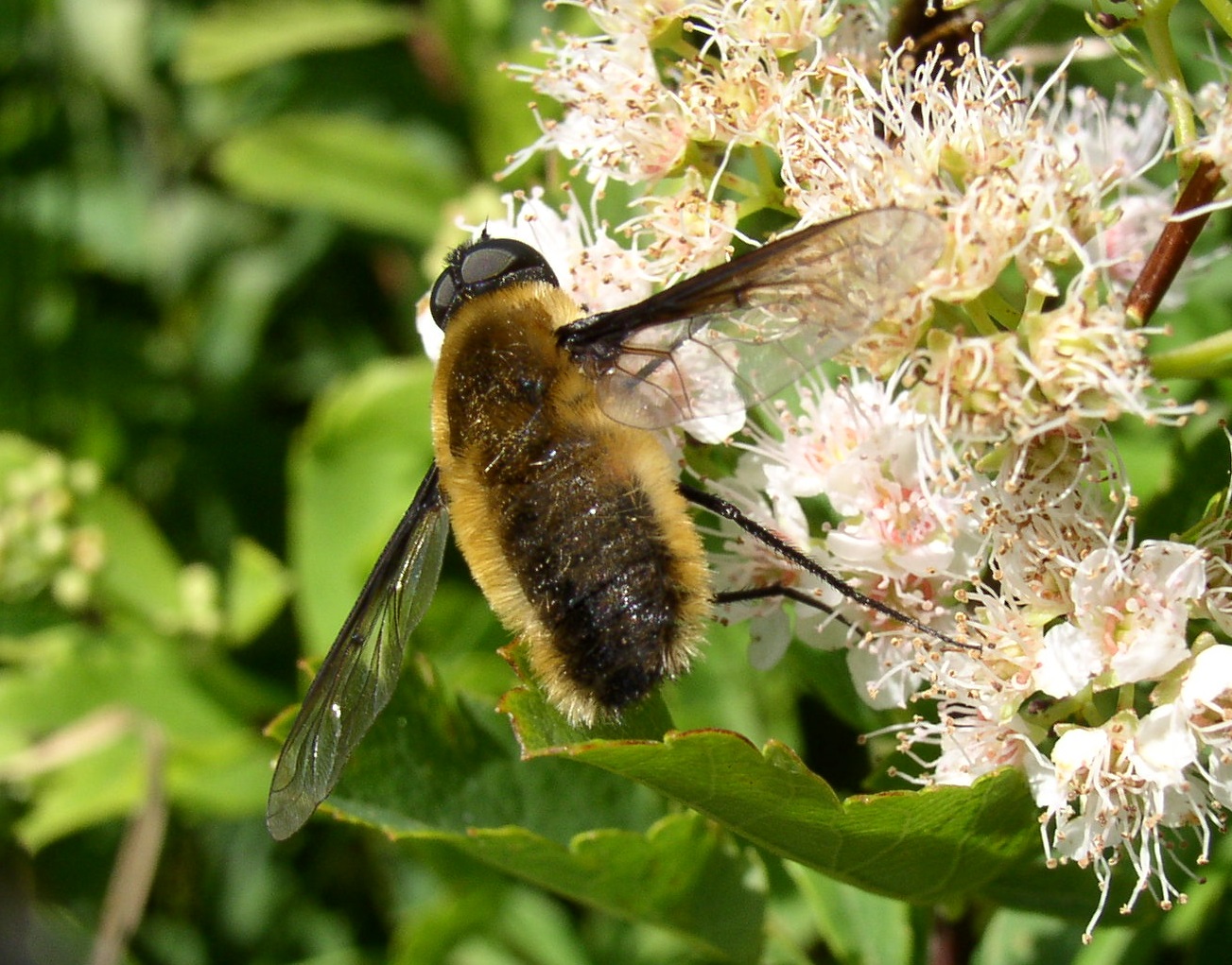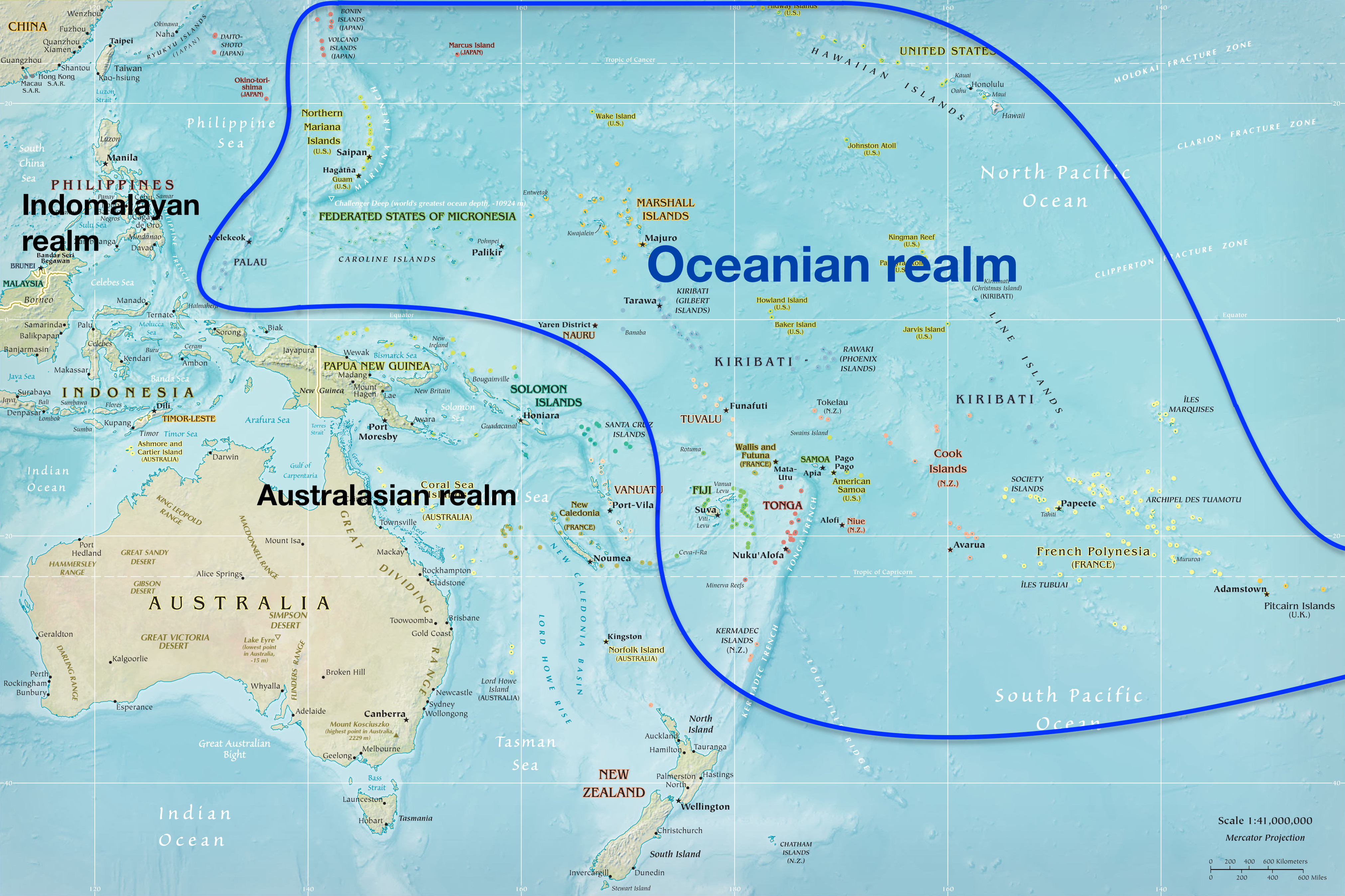|
Brachyanax
''Brachyanax'' is a genus of bee fly in the subfamily Anthracinae. It was circumscribed by Neal Evenhuis in 1981. Thirteen species are recognized, and they are found in Asia and Australasia. Taxonomic history The American entomologist Neal Evenhuis created the genus in a 1981 paper in ''Pacific Insects''. His initial circumscription included eleven species. Four species had first been described in the genus ''Anthrax''; Evenhuis described the other seven species in his initial circumscription. Evenhuis and Junichi Yukawa described an additional new species in 1986. Further changes to the list of species in ''Brachyanax'' occurred in 1988 and 1999. The generic name ''Brachyanax'' comes from the Greek (''brakhús''; "small, short") and ('' ánax''; "lord, master, general-in-chief"). The specific epithet of the type species, ''thelestrephones'', comes from the Greek (''thēlḗ''; "nipple") and (''stréphō''; "twist"). This led to the American entomologist Arnold Menke includi ... [...More Info...] [...Related Items...] OR: [Wikipedia] [Google] [Baidu] |
Dicranoclista
''Dicranoclista'' is a genus of bee flies in the family Bombyliidae. There are at least two described species in ''Dicranoclista''. Species , four species are recognized: * '' Dicranoclista auliae'' — Sudan * '' Dicranoclista fasciata'' Johnson & Johnson, 1960 — USA ( Ariz., Idaho, Ore., Utah, Wash.) * '' Dicranoclista simpsoni'' — Gambia, Senegal * '' Dicranoclista vandykei'' (Coquillett, 1894) — USA ( Calif., Texas Texas (, ; Spanish language, Spanish: ''Texas'', ''Tejas'') is a state in the South Central United States, South Central region of the United States. At 268,596 square miles (695,662 km2), and with more than 29.1 million residents in 2 ..., Wyo.) References Further reading * External links * Bombyliidae Bombyliidae genera {{Bombyliidae-stub ... [...More Info...] [...Related Items...] OR: [Wikipedia] [Google] [Baidu] |
Anthracini
Anthracini is a tribe of bee flies in the family Bombyliidae. Genera *''Anthrax'' Scopoli, 1763 *''Brachyanax'' Evenhuis, 1981 *''Dicranoclista'' Bezzi, 1924 *'' Satyramoeba'' Sack, 1909 *'' Spogostylum'' Macquart, 1840 *'' Thraxan'' Yeates & Lambkin, 1998 *'' Turkmeniella'' Paramonov, 1940 *'' Walkeromyia'' Paramonov, 1934 *''Xenox ''Xenox'' is a genus of bee flies (insects in the family Bombyliidae). There are five described species in ''Xenox'', all of which parasitize bees in the genus ''Xylocopa'' as larvae. Species * ''Xenox delila'' (Loew, 1869) * ''Xenox habrosus'' ...'' Evenhuis, 1985 References Bombyliidae Diptera tribes {{Bombyliidae-stub ... [...More Info...] [...Related Items...] OR: [Wikipedia] [Google] [Baidu] |
Bee Fly
The Bombyliidae are a family of flies, commonly known as bee flies. Adults generally feed on nectar and pollen, some being important pollinators. Larvae are mostly parasitoids of other insects. Overview The Bombyliidae are a large family of flies comprising hundreds of genera, but the life cycles of most species are known poorly, or not at all. They range in size from very small (2 mm in length) to very large for flies (wingspan of some 40 mm).Hull, Frank Montgomery, Bee flies of the world: the genera of the family Bombyliidae Washington, Smithsonian Institution Press 1973 . Downloadable from: https://archive.org/details/beefliesofworl2861973hull When at rest, many species hold their wings at a characteristic "swept back" angle. Adults generally feed on nectar and pollen, some being important pollinators, often with spectacularly long proboscises adapted to plants such as ''Lapeirousia'' species with very long, narrow floral tubes. Unlike butterflies, bee flies hold t ... [...More Info...] [...Related Items...] OR: [Wikipedia] [Google] [Baidu] |
Anthracinae
Anthracinae is a subfamily of bee flies in the family Bombyliidae. There are more than 80 genera and 2,000 described species in Anthracinae. Genera *''Anthrax'' Scopoli, 1763 *'' Aphoebantus'' Loew, 1872 *''Astrophanes'' Osten Sacken, 1886 *'' Atrichochira'' Hesse, 1956 *''Balaana'' Lambkin & Yeates, 2003 *''Brachyanax'' Evenhuis, 1981 *'' Caecanthrax'' Greathead, 1980 *''Chrysanthrax'' Osten Sacken, 1886 *'' Collosoptera'' Hull, 1973 *'' Conomyza'' Hesse, 1956 *'' Cononedys'' Hermann, 1907 *'' Coryprosopa'' Hesse, 1956 *'' Cyananthrax'' Painter, 1959 *'' Defilippia'' Lioy, 1864 *'' Desmatoneura'' Williston, 1895 *'' Deusopora'' Hull, 1971 *'' Diatropomma'' Bowden, 1962 *''Dicranoclista'' Bezzi, 1924 *'' Diochanthrax'' Hall, 1975 *''Dipalta'' Osten Sacken, 1877 *'' Diplocampta'' Schiner, 1868 *'' Epacmoides'' Hesse, 1956 *'' Epacmus'' Osten Sacken, 1886 *''Eucessia'' Coquillett, 1886 *'' Euligyra'' Lambkin & Yeates, 2003 *'' Exechohypopion'' Evenhuis, 1991 *'' Exepac ... [...More Info...] [...Related Items...] OR: [Wikipedia] [Google] [Baidu] |
Antennae (biology)
Antennae ( antenna), sometimes referred to as "feelers", are paired appendages used for sensing in arthropods. Antennae are connected to the first one or two segments of the arthropod head. They vary widely in form but are always made of one or more jointed segments. While they are typically sensory organs, the exact nature of what they sense and how they sense it is not the same in all groups. Functions may variously include sensing touch, air motion, heat, vibration (sound), and especially smell or taste. Antennae are sometimes modified for other purposes, such as mating, brooding, swimming, and even anchoring the arthropod to a substrate. Larval arthropods have antennae that differ from those of the adult. Many crustaceans, for example, have free-swimming larvae that use their antennae for swimming. Antennae can also locate other group members if the insect lives in a group, like the ant. The common ancestor of all arthropods likely had one pair of uniramous (unbranched) a ... [...More Info...] [...Related Items...] OR: [Wikipedia] [Google] [Baidu] |
Thorax (insect Anatomy)
The thorax is the midsection ( tagma) of the hexapod body (insects and entognathans). It holds the head, legs, wings and abdomen. It is also called mesosoma or cephalothorax in other arthropods. It is formed by the prothorax, mesothorax and metathorax and comprises the scutellum; the cervix, a membrane that separates the head from the thorax; and the pleuron, a lateral sclerite of the thorax. In dragonflies and damselflies the mesothorax and metathorax are fused together to form the synthorax. In some insect pupae, like the mosquitoes', the head and thorax can be fused in a cephalothorax. Members of suborder Apocrita (wasps, ants and bees) in the order Hymenoptera have the first segment of the abdomen fused with the thorax, which is called the propodeum. The head is connected to the thorax by the occipital foramen, enabling a wide range of motion for the head. In most flying insects, the thorax allows for the use of asynchronous muscles Asynchronous muscles are muscles in ... [...More Info...] [...Related Items...] OR: [Wikipedia] [Google] [Baidu] |
Morphology (biology)
Morphology is a branch of biology dealing with the study of the form and structure of organisms and their specific structural features. This includes aspects of the outward appearance (shape, structure, colour, pattern, size), i.e. external morphology (or eidonomy), as well as the form and structure of the internal parts like bones and organs, i.e. internal morphology (or anatomy). This is in contrast to physiology, which deals primarily with function. Morphology is a branch of life science dealing with the study of gross structure of an organism or taxon and its component parts. History The etymology of the word "morphology" is from the Ancient Greek (), meaning "form", and (), meaning "word, study, research". While the concept of form in biology, opposed to function, dates back to Aristotle (see Aristotle's biology), the field of morphology was developed by Johann Wolfgang von Goethe (1790) and independently by the German anatomist and physiologist Karl Friedrich Burdach ... [...More Info...] [...Related Items...] OR: [Wikipedia] [Google] [Baidu] |
Palearctic Realm
The Palearctic or Palaearctic is the largest of the eight biogeographic realms of the Earth. It stretches across all of Eurasia north of the foothills of the Himalayas, and North Africa. The realm consists of several bioregions: the Euro-Siberian region; the Mediterranean Basin; the Sahara and Arabian Deserts; and Western, Central and East Asia. The Palaearctic realm also has numerous rivers and lakes, forming several freshwater ecoregions. The term 'Palearctic' was first used in the 19th century, and is still in use as the basis for zoogeographic classification. History In an 1858 paper for the ''Proceedings of the Linnean Society'', British zoologist Philip Sclater first identified six terrestrial zoogeographic realms of the world: Palaearctic, Aethiopian/Afrotropic, Indian/Indomalayan, Australasian, Nearctic, and Neotropical. The six indicated general groupings of fauna, based on shared biogeography and large-scale geographic barriers to migration. Alfred Wallace ad ... [...More Info...] [...Related Items...] OR: [Wikipedia] [Google] [Baidu] |
Oceanian Realm
The Oceanian realm is one of the World Wildlife Fund (WWF) biogeographic realms, and is unique in not including any continental land mass. It has the smallest land area of any of the WWF realms. This realm includes the islands of the Pacific Ocean in Micronesia, the Fijian Islands, the Hawaiian islands, and Polynesia (with the exception of New Zealand). New Zealand, Australia, and most of Melanesia including New Guinea, Vanuatu, the Solomon Islands, and New Caledonia are included within the Australasian realm. Conversely, New Guinea, New Caledonia, the Solomon Islands and New Zealand are included in the Oceanian realm in the classification scheme developed by Miklos Udvardy in 1975.Udvardy, M. D. F. (1975). ''A classification of the biogeographical provinces of the world''. IUCN Occasional Paper no. 18. Morges, Switzerland: IUCN.Udvardy, Miklos D. F. (1975) ''World Biogeographical Provinces'' (Map). The CoEvolution Quarterly, Sausalito, Californialink The Juan Fernández Islan ... [...More Info...] [...Related Items...] OR: [Wikipedia] [Google] [Baidu] |
Australasian Realm
The Australasian realm is a biogeographic realm that is coincident with, but not (by some definitions) the same as, the geographical region of Australasia. The realm includes Australia, the island of New Guinea (comprising Papua New Guinea and the Indonesian province of Papua), and the eastern part of the Indonesian archipelago, including the island of Sulawesi, the Moluccan islands (the Indonesian provinces of Maluku and North Maluku), and the islands of Lombok, Sumbawa, Sumba, Flores, and Timor, often known as the Lesser Sundas. The Australasian realm also includes several Pacific island groups, including the Bismarck Archipelago, Vanuatu, the Solomon Islands, and New Caledonia. New Zealand and its surrounding islands are a distinctive sub-region of the Australasian realm. The rest of Indonesia is part of the Indomalayan realm. In the classification scheme developed by Miklos Udvardy, New Guinea, New Caledonia, Solomon Islands and New Zealand are placed in the Oceania ... [...More Info...] [...Related Items...] OR: [Wikipedia] [Google] [Baidu] |





